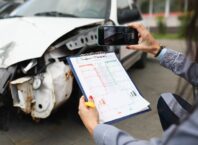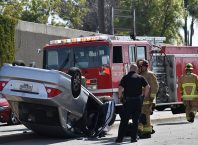The initiative of Vision Zero was created to reduce traffic fatalities and keep motorists safe. There is an excellent motivation behind it, but the results of related traffic law changes have been a mixed bag to date.
Some locations are thriving while others are struggling. In New York, traffic injuries have climbed since 2014 despite having adopted Vision Zero.
This is worrisome because it indicates that this concept’s effect is not being maximized. It has a noble purpose, but poor implementation can prevent it from being useful.
It’s helpful to look at what makes this principle effective so that more locations can try it. Let’s take a look at what Vision Zero is and how it can be perfected.
Contents
What Is Vision Zero?
Vision Zero is an initiative that first appeared in Sweden during the mid-90s. It was launched to eliminate car accident deaths by changing the thought process behind what causes them and who is to blame.
The core belief behind Vision Zero is that drivers are not entirely to blame for accidents that happen. Traditionally speaking, the responsibility is solely held by a driver who gets into an accident.
Vision Zero changes this by accepting that responsibility is a burden to be shared. This means that the designers of transportation systems are also to blame for any accidents that happen.
What this translates to is that road and traffic laws must be created to keep drivers safe with all circumstances considered. For example, speed limits should be set based upon whether pedestrians are involved, what types of accidents can happen, and the infrastructure of the surrounding road.
How Does This Lead to Safer Roads?
Now it’s important to understand how this relates to creating safer roads.
When the principles of Vision Zero are adopted, lawmakers have the understanding that car crashes are preventable. This means that nobody needs to die in an accident and any laws passed must serve this purpose.
Not only must lawmakers follow this philosophy, but they also need to develop design features and techniques for enforcement that allow this to happen. This results in several different safety measures that help prevent accidents.
This includes design features like the addition of barriers between lanes, speed bumps, and roundabouts. These are supplemented with enforcement tactics like cameras for red lights and speeding.
There isn’t a singular tactic that makes Vision Zero effective, but it is the cumulative effect of several implementations that help avoid accidents.
Is Vision Zero Working?
At this point, you’re likely wondering if Vision Zero is working.
This depends on the parameters of what you view as effective. The ultimate goal of Vision Zero is to eliminate all traffic deaths.
At this point, there is not a single location following Vision Zero that has zero fatalities related to transportation. In that strict sense, Vision Zero is not perfectly fulfilling its goal.
However, it is more reasonable that the driving force behind Vision Zero is to minimize the number of driving fatalities. In a perfect world, zero deaths are possible, but the reality is very different and there are too many circumstances that make this difficult.
To imagine this, picture the issue involving distracted driving. This is something that officials are surely trying to eliminate, but doing so is near impossible.
To combat distracted driving, many states have made it illegal to use your cellphone while driving. This should dissuade drivers from doing it, but it does still happen and that is evidenced by the fact that distracted driving is the leading cause of car accidents.
To simply lower the number of accidents, Vision Zero is effective in numerous locations where it is being implemented. This is excellent progress and cannot be overlooked.
However, Vision Zero requires specific measures to ensure that it is successful.
What Else Is Needed?
These measures include how lawmakers approach this philosophy. Education is surely an important step in the process, but road design is critical to making it work.
This means that infrastructural changes are essential for a successful Vision Zero. Locations that emphasize making it difficult to be unsafe will be much more effective than those that strictly focus on enforcement.
For example, picture two different scenarios. The first is a location that has a stretch of road where it’s possible to drive 60 MPH or faster yet has a speed limit of just 30 MPH. This road’s speed limit is kept enforced by police officers and traffic cameras.
In the second scenario, you have a stretch of road where you can only plausibly go 35 MPH and the speed limit is 30 MPH. Imagine this road having numerous speed bumps and roundabouts.
With these two examples, which one will be more effective? It’s undoubtedly the second example because it structurally makes it impossible to speed in excess and be reckless.
This is what cities need to take into account when considering Vision Zero. Focus more on structural changes and less on superficial enforcement.
Closing Thoughts
Vision Zero is an excellent idea that aims to make roads safer for drivers and pedestrians alike.
Unfortunately, implementation of its philosophies doesn’t always hit the mark and this is where some view Vision Zero as ineffective. At its best, Vision Zero is used to create structural changes that are backed with enforcement to make unsafe driving behavior impossible.
Locations that emphasize making significant changes are far more effective than those that rely on education alone. Because of this, Vision Zero is not perfect and it is incredibly difficult to reach the ultimate goal of zero traffic deaths.
At the moment, some locations are producing positive results and what they are doing should be viewed as a blueprint for success.












